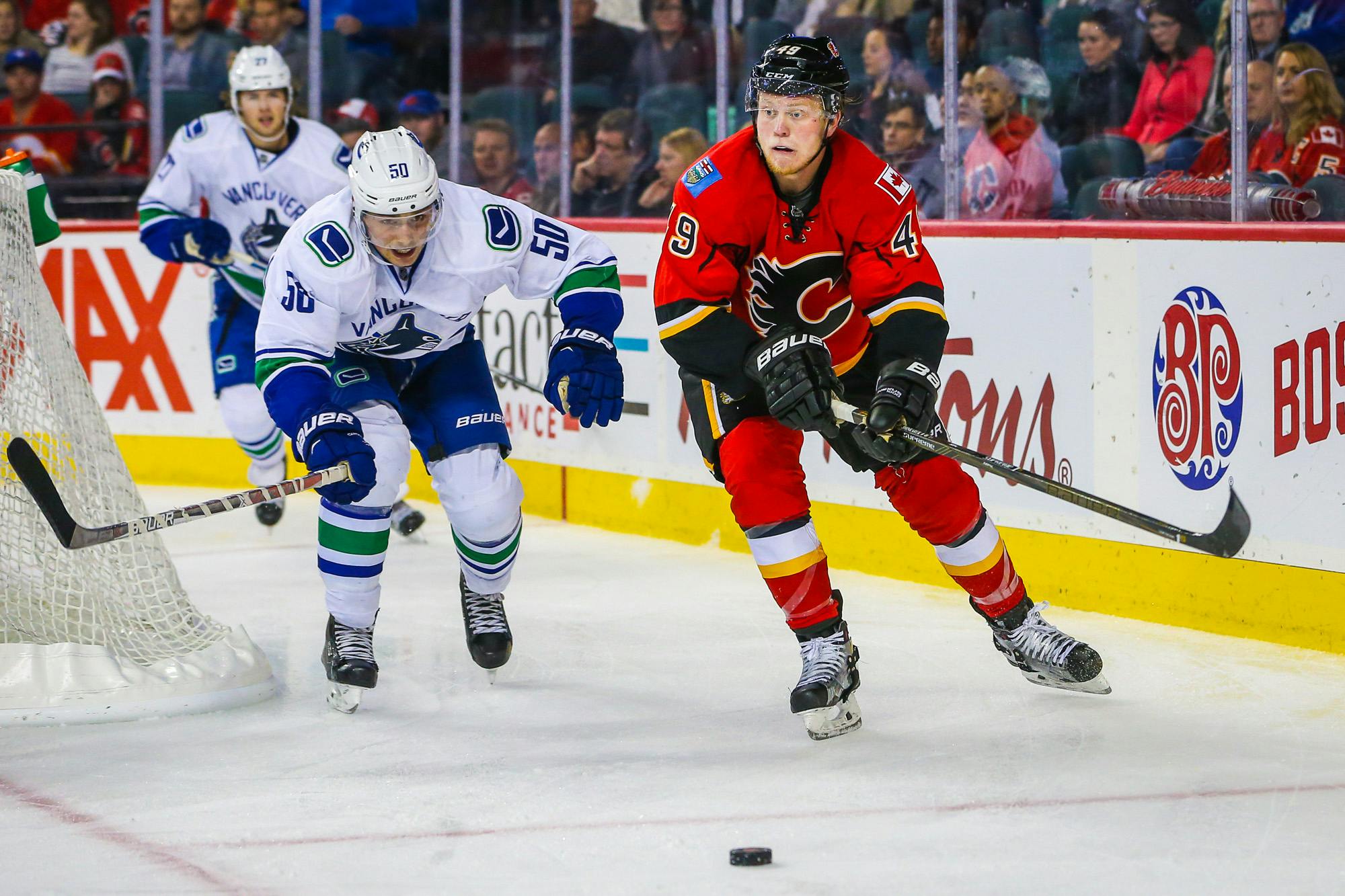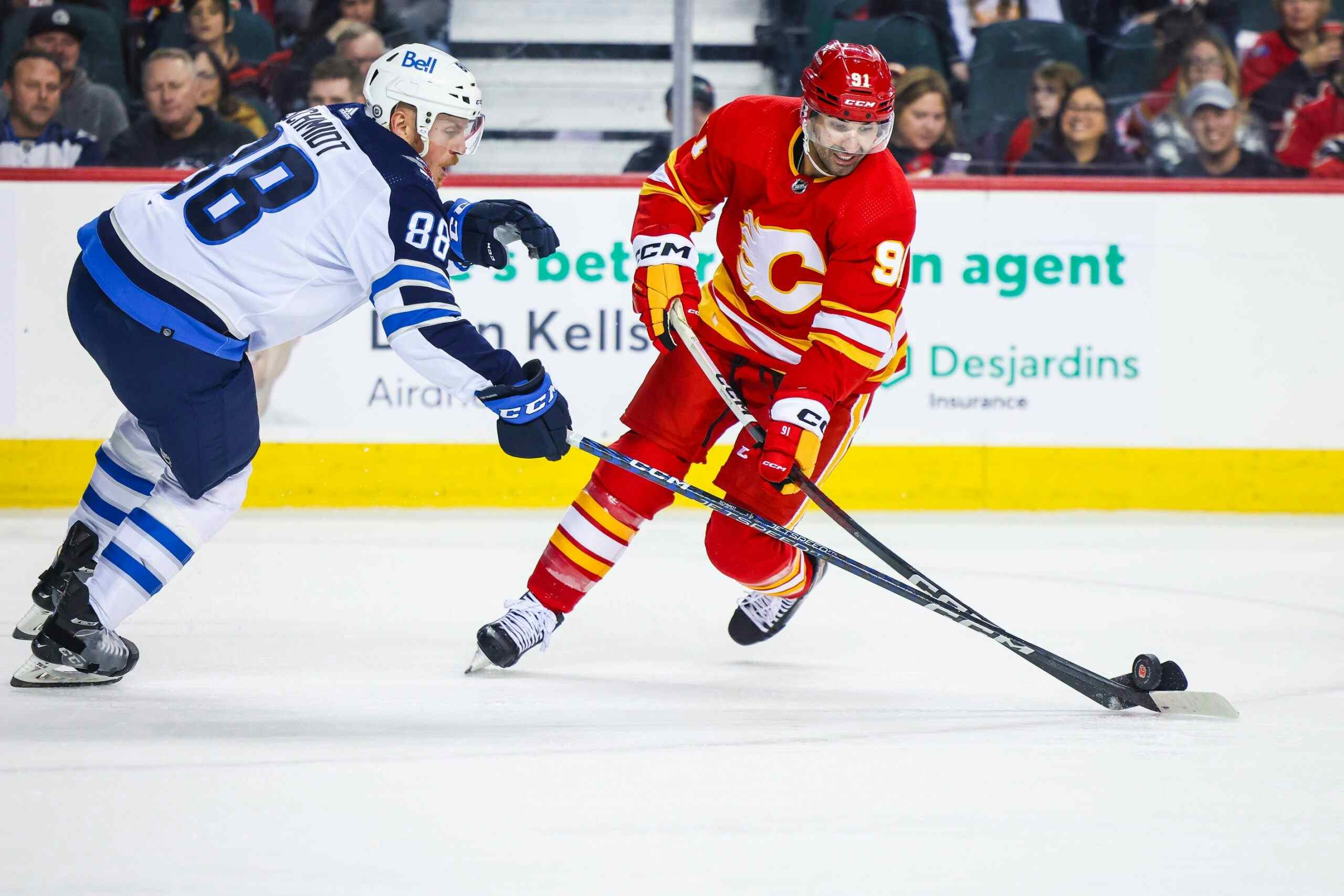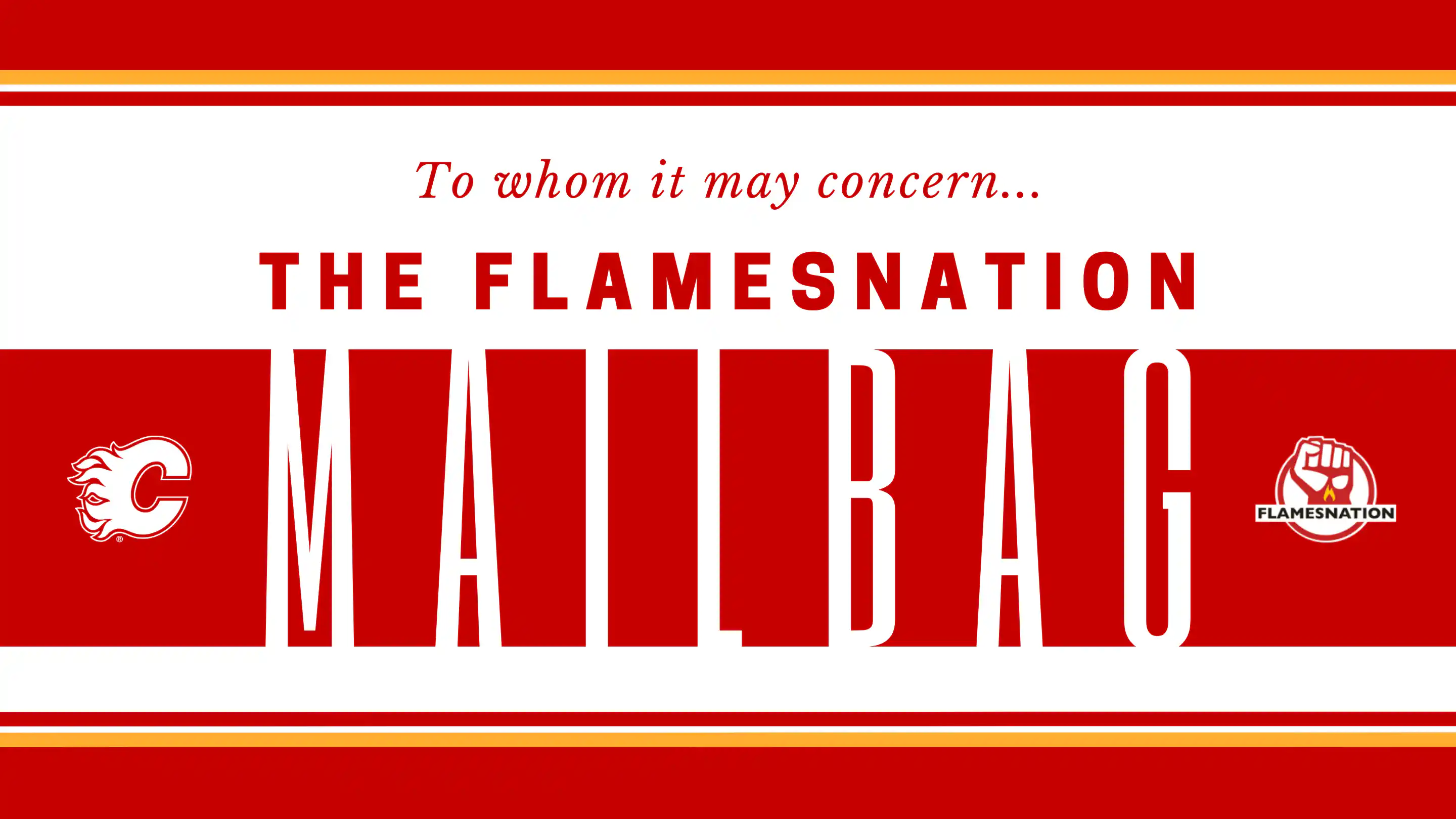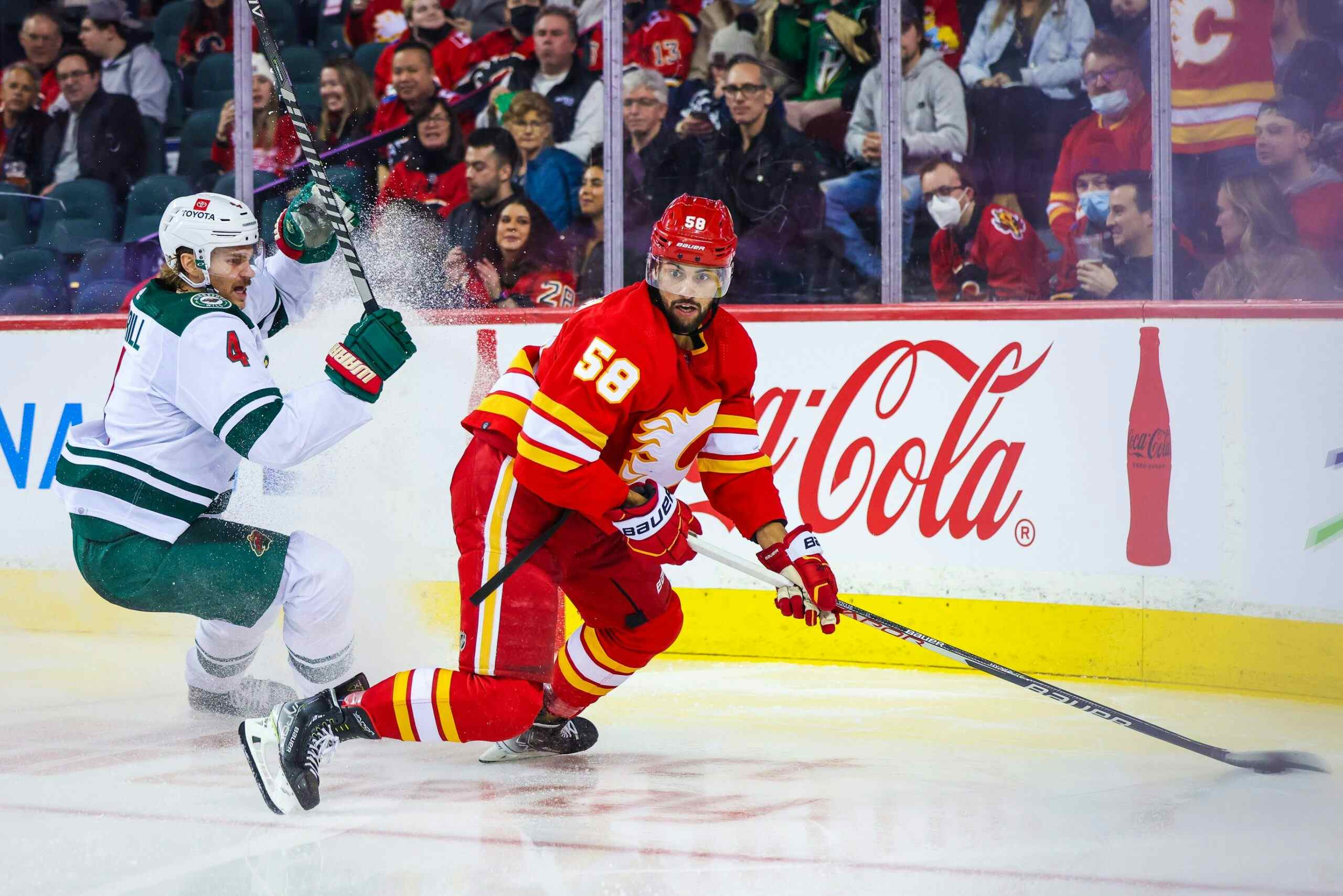What’s the difference between Curtis Lazar and Hunter Shinkaruk?

By Ari Yanover
6 years agoWaivers may end up forcing the Flames’ hands when it comes to putting together their starting roster for the 2017-18 season.
For most players, their waiver eligibility status doesn’t really change anything: they’d be in the NHL regardless. And for some, it may be useful. For example, if the Flames decide they want Jon Gillies or David Rittich to be their backup, they can do that: neither prospective goalie requires waivers, meaning both can be sent down and recalled as the team pleases.
That will no longer be the case for a handful of prospects, however.
To be concerned with waivers – or not?
Two seasons ago, Joni Ortio’s waiver eligibility forced the Flames to keep three goalies on the roster. It turned out they really had no reason to do that. Ortio was eventually sent down to the AHL, and nobody claimed him. Why? Because every other team already had an Ortio of their own, and wasn’t going to disrupt their already existing goaltending tandems for an offshoot prospect.
Tyler Wotherspoon became waiver eligible this past season, and nobody claimed him. Why? Because every other team has their own Wotherspoon: a young, marginal defenceman with all of 26 NHL games played, and not somebody who presented enough upside to be worth placing on their immediate NHL roster. He passed through unclaimed because nobody felt he was an NHL-level defender.
Emile Poirier will require waivers this season. He’ll probably pass through them unclaimed, because why would an NHL team place a prospect who isn’t theirs, someone who has played all of six NHL games in the past, on their immediate roster? Who on another team is he going to displace? (And that’s not a knock on him – it’s more that every team has a Poirier, and though he had a promising rookie season and his outlook following this season now looks much more positive, it’s still a big ask of him to step in the NHL right away next season, for any team.)
For the most part, waivers regarding borderline prospects aren’t exactly a concern. On occasion the handwringing may be justified, though.
Three this upcoming season
Brett Kulak, Curtis Lazar, and Hunter Shinkaruk will all require waivers to be sent down starting in 2017-18.
Kulak is less of a concern than the other two. He’s shown the most potential compared to any other Flames defensive prospect since probably T.J. Brodie, but it so happens that the Flames have three spots available on their backend (four, if Matt Bartkowski is sent down). And considering how Kulak spent roughly the same amount of time in the NHL as he did the AHL this past season, not to mention his general apparent competency at the NHL level – even if just in limited situations – he’s proven he does deserve a chance at the highest level. To risk losing someone who should already be in the NHL on a waiver claim would be faulty management.
(Of course, absolutely none of that matters if Vegas claims Kulak in the expansion draft, anyway: a distinct possibility.)
Comparing Lazar and Shinkaruk
Lazar and Shinkaruk are slightly different stories. Both are forward prospects from the first round of the 2013 NHL draft who were essentially traded for second round picks – Lazar for a 2017 second, and Shinkaruk for Markus Granlund, who was a 2011 second – but their careers to date are pretty different.
| Player | AHL GP | NHL GP | AHL P | NHL P | AHL PPG | NHL PPG |
| Lazar | 13 | 180 | 4 | 39 | .31 | .22 |
| Shinkaruk | 188 | 15 | 117 | 4 | .62 | .27 |
Lazar has spent almost as much time in the NHL as Shinkaruk has in the AHL, and vice versa. If your preference defaults to the NHLer, then in theory, Lazar is your guy: he’s spent most of his career to date in the NHL, and considering the whole waivers situation, seems unlikely to return to the AHL, barring a conditioning stint. He hasn’t exactly shown much in the NHL, but some of that could be Ottawa’s fault for rushing him.
Shinkaruk, on the other hand, has shown more, but at lower levels. His smaller NHL sample size should be discounted, but that’s real potential for offensive talent at the AHL level – including this past season, when things didn’t quite go to plan. AHL numbers don’t always translate, but at the same time are relevant. Via Christian Tiberi, his AHL numbers compare to names such as Patric Hornqvist, Colton Sceviour, Joe Colborne, Mike Hoffman, Matt Calvert, Jamie McGinn, Matt Halischuk, Michael Grabner, Darren Helm, Justin Abdelkader, and Troy Brouwer: a wide range of talent that has some potential at being a top six player, but more likely to fall as a middle to bottom guy.
A bird in the hand may be worth two in the bush – but we aren’t exactly accounting for the quality of birds in that statement. Lazar is an NHLer because Ottawa decided he was one and left no room for correction. Does Lazar even have top six potential, or is his ceiling that of a third liner? And Shinkaruk? He still has the chance to prove he can be worth more – but it has to come pretty much now, lest another team not afford the Flames the chance to continue taking their time, essentially turning their second round pick into a waste.
And that’s the concern with protecting Lazar in the expansion draft, is it not?
Recent articles from Ari Yanover





